Controlling Runoff
One of our main problems in our water is
runoff. In order to improve our water quality we must learn to
control runoff. Areas which were once forests, farms, and meadows
are being transformed into houses, shopping centers, roadways,
and parking lots. Rainwater was once absorbed into vegetated soils
which recharged aquifers and helped maintain healthy waterways.
Now rainwater collects on non-porous surfaces, in detention basins,
and systems of drainage pipes which dump it directly into streams,
wetlands, lakes, and rivers. Our man-made approach to storm water
has caused flooding, well problems, and an overall decline in
water quality.
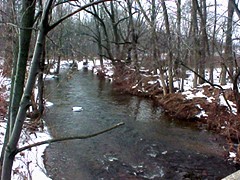 |
|
 |
| Roots from stream side vegetation
help control runoff. |
|
All the snow and water that
falls on "championship hill" behind Pennridge High School eventually
moves to the nearby East Branch of the Perkiomen Creek. |
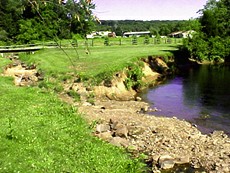 |
|
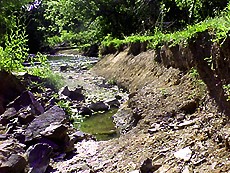 |
| Erosion of the banks of East Branch of the
Perkiomen Creek is evident throughout its length in the Pennridge School
District. |
|
Storm runoff at this little creek at
the same location is significant. |
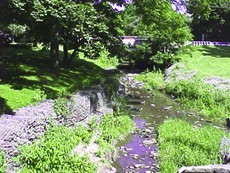 |
|
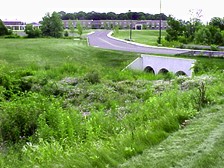 |
| Stream channelization in Sellersville
at branch Perkiomen Creek next to the bike trail in Lenape Park. |
|
A conventional detention basin in front
of our school is typical of modern development in our area. |
CAUSES OF RUNOFF
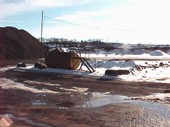 |
|
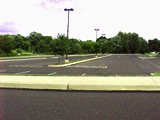 |
|
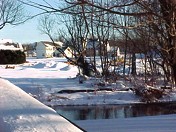 |
| Removing vegetation at M & M Quarry
at Cathill & Quarry Roads can significantly increase runoff. |
|
Paved parking lots don't allow water to be
absorbed into the ground as it naturally would be. |
|
New building near Moods Bridge in East
Rockhill Township uses a containment system to control runoff where vegetation
was removed. |
PROBLEMS
The impact of storm water on stream habitat
include increased non-point pollution, accelerated bank erosion,
channel widening, reduced depth, loss of shade and increased temperature.
All of these factors can affect the overall quality of our local
waterways and the creatures that live in it .
SOLUTIONS
Increasing native vegetation along waterway,
soil containment systems, and reducing the use of non porous materials
(macadam or cement) help to reduce runoff. Use of swales and french
drains and other "infiltration" practices along large
paved surfaces will also help the problem. Finally, better land
development practices which keep soil and natural vegetation in
place need to be implemented.
 |
Increased water in the East Branch of the Perkiomen
Creek has caused erosion of the creek banks. These photos show
recent efforts to reduce erosion of the bank in Sellersville. |
 |
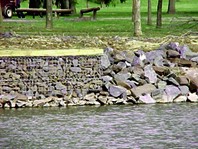 |







